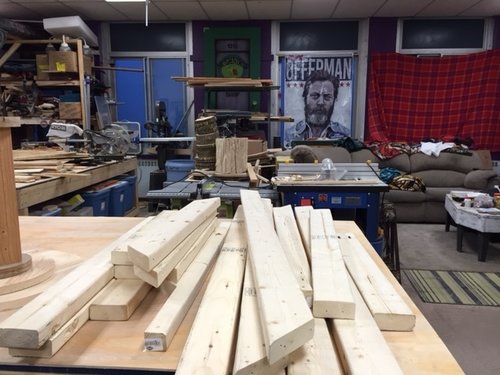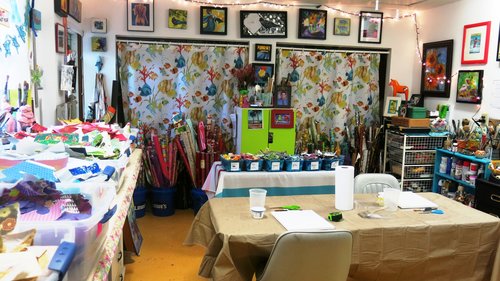by Carolyn Edlund
Increase profitability, control your costs, and save your sanity by becoming more efficient in the studio.

Plan ahead to make your studio processes and records as efficient as possible.
Make a Production Calendar
A simple calendar system can keep your studio projects on-task by alloting enough time to get everything accomplished. This method may be used whether you are receiving orders from wholesale customers, lining up commissions, or building inventory for an upcoming show or sale.
As you take orders for your work, place those projects and a time frame to complete them on your calendar. In this way, you can see your commitments easily, promise delivery to clients as your schedule permits, or even decline an order if necessary. Studio production calendars may be booked out for months in advance. Using this method gives you enough time to get orders completed and shipped on time, and adds breathing room. It puts you in control, so you can balance your days, book creative and personal time in your schedule, and reduce your stress level.

Laser cutting technology enables Matt Thomas to make production items quickly.
From Tools to High Tech
Studio production benefits from the use of patterns, templates, and molds. These basic methods help to keep your work consistent, so that the original design can be duplicated quickly and easily. This is ideal for a studio selling into the wholesale market where conformity is important.
Woodworker Matt Thomas uses these methods in his own production studio in West Virginia, but goes further with high-tech tools. As his handmade business has grown, he’s incorporated laser cutting into his production as well as a CNC router. This saves tons of time and effort.
“I do a lot of engraving for corporate gifts and custom items, so that equipment has allowed me to further streamline. What used to take a day can take a few hours now,” he says. “This increases efficiency even more, since I can let the equipment run while taking care of other studio tasks.”

Raven Skye McDonough organizes her materials for reference and mobility.
Organize Workflow and Materials
Artists of all types, in production or not, benefit from being organized. Design a logical flow in your studio space by setting up stations where certain type of work is done in the creation process. Move work in progress through these stations in batches to save time. In that space, keep frequently used tools and materials within easy reach.
Avoid hassles by taking stock of materials, determining your regular needs, and ordering on a timely basis to avoid running out. Consider purchasing materials on a wholesale basis if you use them in quantity, or partner with other artists to place co-op orders or purchase in bulk at a discount.
Collage artist Raven Skye McDonough uses bins to sort the papers she uses by color, with separate storage for small pieces. “Paper is precious,” she says, “and every piece can be used. Using bins is easy storage, and I can find what I need quickly. I also give workshops, so this enables me to take my paper inventory with me when I travel.”
Keep records and manage inventory
If you have a small production business or art studio, your inventory may be on-site and paperwork will suffice to stay on top of things. Other artists may have work in galleries, in storage or elsewhere, which complicates inventory management. You may choose to maintain records of your current inventory by creating your own spreadsheets. Or, use an online tool like Artwork Archive to track and manage available artwork and sales, and produce reports.
Hire studio assistants
As your business expands, hiring helpers to do particular types of work can ease production. Delegate tasks that require a lower skill level to someone who can handle those basic jobs. This frees you up to do the high-skill level activities that require your expertise alone. Your pricing formula will include labor costs, and when helpers take care of this at a lower rate, you earn for each hour they work. This allows you to not only provide employment for your assistant, but increase your own income.
Potter Julie Spako recently took the plunge and hired help to fulfill large orders when her business grew quickly. “It took me a while to find the right person, but it cut my labor time more than in half. I have everything ready to go for her, and she takes care of the rest,” Spako says.
She recommends that artists give a lot of thought to the hiring process. “It’s important to find the right match in a studio assistant. You need someone you can trust, since hiring help is one of the most important things you can do for your business,” she says. “Use your instincts, and know that you are hiring them for the right reasons.”
How have you streamlined your own studio? What benefits have you realized?



Speak Your Mind